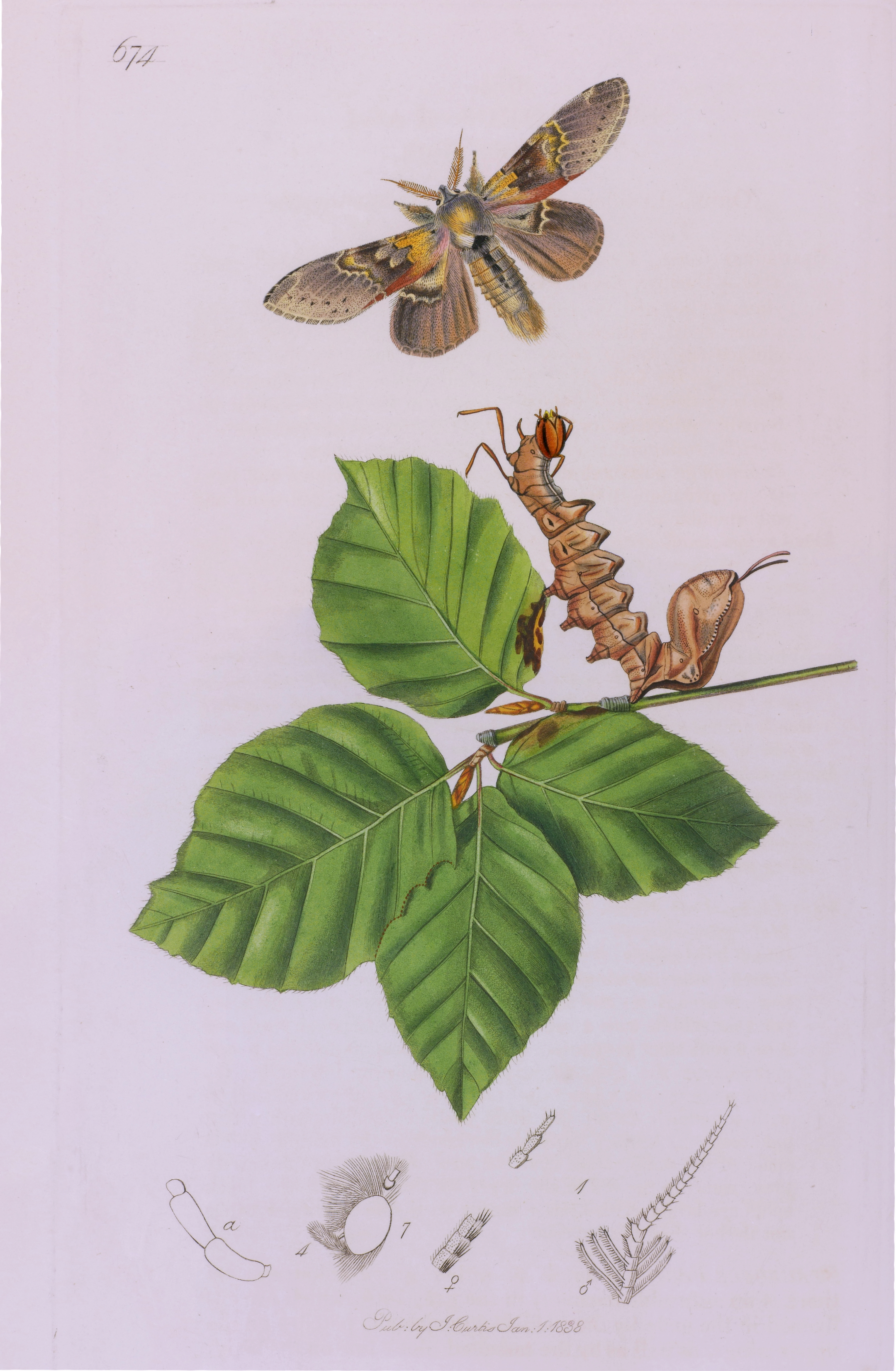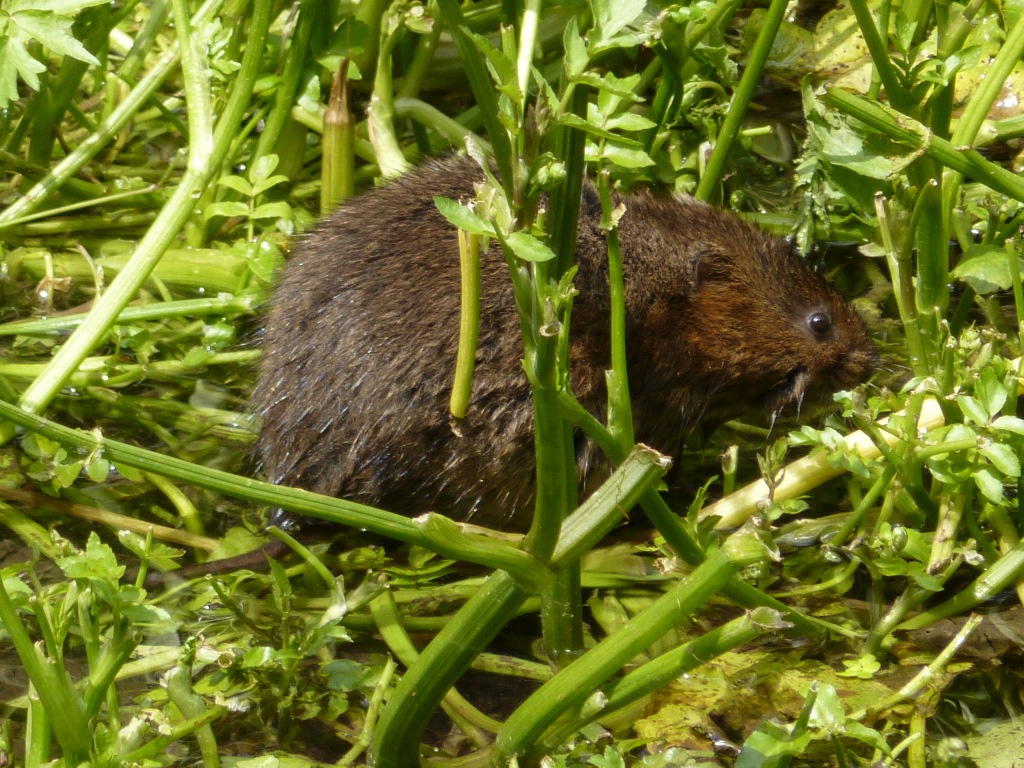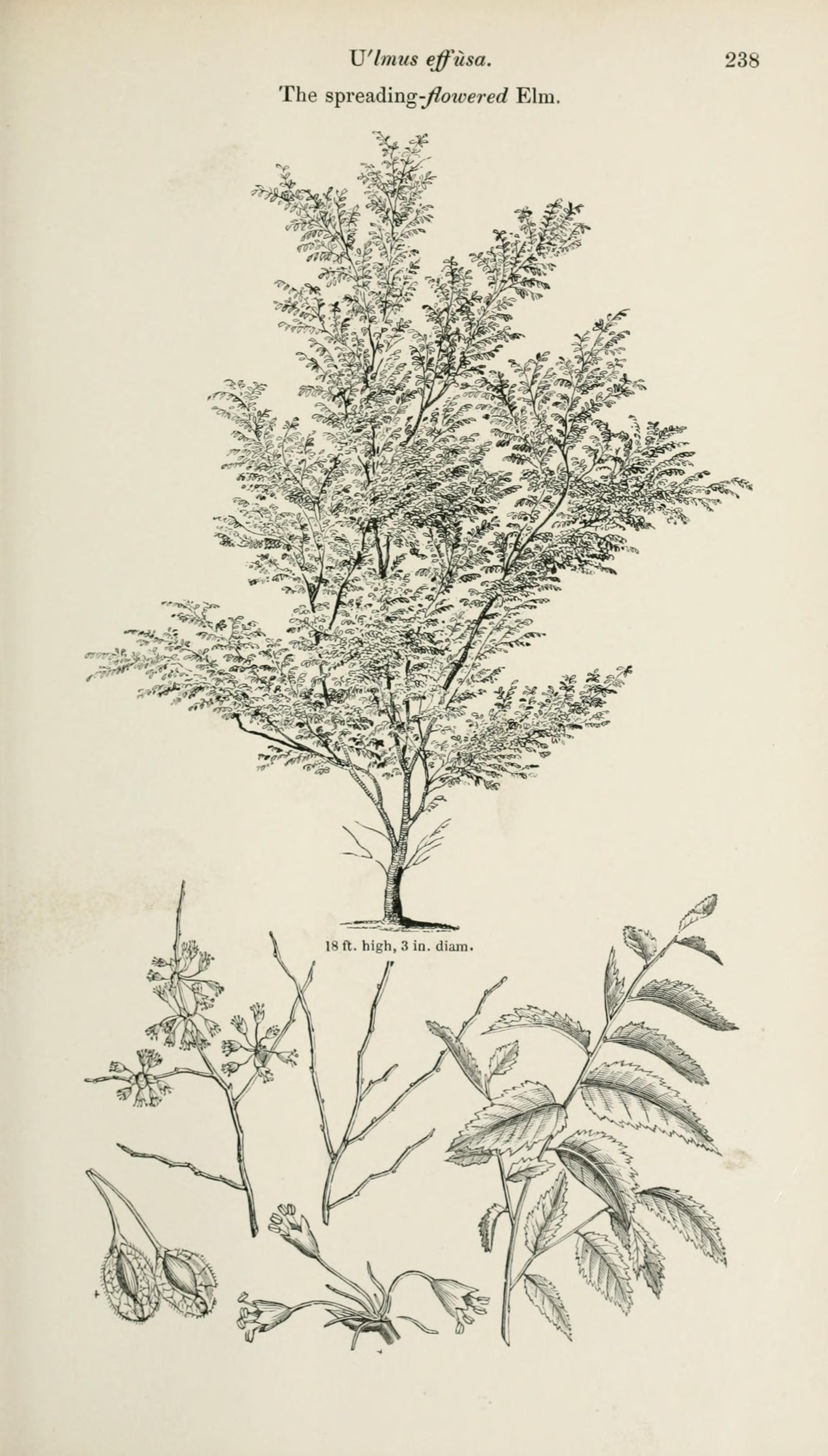|
Abraxas Sylvata
''Abraxas sylvata'', the clouded magpie, is a Palearctic moth of the family Geometridae that was named by Giovanni Antonio Scopoli in 1763. Description This moth is mostly white with brownish patches across all of the wings. There are small areas of pale gray on the forewings and hindwings. They resemble bird droppings while resting on the upper surface of leaves. The wingspan is 38 mm. to 48 mm. The wings are thinly scaled and partially transparent, with a white ground colour. The forewings are yellow-brown at the base and have a large, yellow and black spot at the dorsal edge, otherwise scattered, light grey spots, some of which form a cross-band in the outer part of the wing. The hindwings have a yellow and black spot at the edge of the inner edge, otherwise scattered, light grey spots. The larva has black and yellow longitudinal stripes. Subspecies *''Abraxas sylvata sylvata'' *''Abraxas sylvata microtate'' Wehrli, 1931 (Japan) Biology The adults fly from late May t ... [...More Info...] [...Related Items...] OR: [Wikipedia] [Google] [Baidu] |
Giovanni Antonio Scopoli
Giovanni Antonio Scopoli (sometimes Latinized as Johannes Antonius Scopolius) (3 June 1723 – 8 May 1788) was an Italian physician and naturalist. His biographer Otto Guglia named him the "first anational European" and the "Linnaeus of the Austrian Empire". Biography Scopoli was born at Cavalese in the Val di Fiemme, belonging to the Bishopric of Trent (today's Trentino), son of Francesco Antonio, military commissioner, and Claudia Caterina Gramola (1699-1791), painter from a patrician family from Trentino. He obtained a degree in medicine at University of Innsbruck, and practiced as a doctor in Cavalese and Venice.Newton, Alfred 1881. ''Scopoli's ornithological papers.'' The Willoughby SocietyScanned version/ref> Much of his time was spent in the Alps, collecting plants and insects, of which he made outstanding collections. He spent two years as private secretary to the bishop of Seckau, and then was appointed in 1754 as physician of the mercury mines in Idrija, a small to ... [...More Info...] [...Related Items...] OR: [Wikipedia] [Google] [Baidu] |
Caterpillar
Caterpillars ( ) are the larva, larval stage of members of the order Lepidoptera (the insect order comprising butterfly, butterflies and moths). As with most common names, the application of the word is arbitrary, since the larvae of sawfly, sawflies (suborder Symphyta) are commonly called caterpillars as well. Both lepidopteran and symphytan larvae have eruciform body shapes. Caterpillars of most species herbivore, eat plant material (Folivore, often leaves), but not all; some (about 1%) insectivore, eat insects, and some are even cannibalistic. Some feed on other animal products. For example, clothes moths feed on wool, and Ceratophaga vastella, horn moths feed on the hooves and horns of dead ungulates. Caterpillars are typically voracious feeders and many of them are among the most serious of Agriculture, agricultural Pest (organism), pests. In fact, many moth species are best known in their caterpillar stages because of the damage they cause to fruits and other agricult ... [...More Info...] [...Related Items...] OR: [Wikipedia] [Google] [Baidu] |
British Entomology
''British Entomology'' is a classic work of entomology by John Curtis, FLS. It is subtitled ''Being Illustrations and Descriptions of the Genera of Insects found in Great Britain and Ireland: Containing Coloured Figures from Nature of the Most Rare and Beautiful Species, and in Many Instances of the Plants Upon Which they are Found''. The work comprises 770 hand-coloured, copper-plate engravings, each 8 by inches (20×14 cm), together with two or more pages of text. The work was issued in monthly parts over 16 years, each part comprising three or more (usually four) plates. Plates were initially printed on James Whatman's Turkey Mill paper and then (circa 1832) on Rye Mill paper. It was a masterpiece of the engraver's and colourist's art, described by the eminent French naturalist Georges Cuvier as the "paragon of perfection". Close examination of a proof set of plates (see below) reveals an obsessive attention to detail. The shading of the foliage is typically achie ... [...More Info...] [...Related Items...] OR: [Wikipedia] [Google] [Baidu] |
John Curtis (entomologist)
John Curtis (3 September 1791 – 6 October 1862) was an English entomologist and illustrator. Biography Curtis was born in Norwich to Frances and Charles Morgan Curtis. Charles Morgan died before his son had reached the age of 4 years. His mother, Frances, had a passion for flowers and was a professional flower grower. She encouraged her son to study natural history with a young local naturalist, Richard Walker (1791–1870). At the age of 16 John became an apprentice at a local lawyer's office in Norwich but devoted his spare time to studying and drawing insects and, with insect collecting becoming a growing craze, he found he could make a living selling the specimens he found. At this time he became a friend of Simon Wilkin (1790–1862) a wealthy landowner in Norfolk, eventually leaving his job to live with Wilkin at Cossey Hall where the extensive natural history library and specimen collection afforded him the opportunity to study his emerging over-riding passion, ento ... [...More Info...] [...Related Items...] OR: [Wikipedia] [Google] [Baidu] |
United Kingdom Biodiversity Action Plan
The United Kingdom Biodiversity Action Plan or (UK BAP) was the UK government's response to the Convention on Biological Diversity, opened for signature at the Rio Earth Summit in 1992. The UK was the first country to produce a national Biodiversity Action Plan. It was published in 1994 and created action plans for priority species and habitats in the UK that were most under threat so as to support their recovery. Purpose The UK Biodiversity Action Plan summarised the most threatened or rapidly declining biological resources of the United Kingdom, and gave detailed plans for their conservation. Individual 'Action Plans' were provided for these habitats and species, and a reporting mechanism was established to demonstrate how the UK BAP was contributing to the United Kingdom's commitment to help reduce or halt the significant losses in global biodiversity, highlighted by the international Convention on Biological Diversity. The original publication included action plans for 45 hab ... [...More Info...] [...Related Items...] OR: [Wikipedia] [Google] [Baidu] |
Abraxas Grossulariata
''Abraxas grossulariata'' is a moth of the family Geometridae, native to the Palearctic realm and North America. Its distinctive speckled coloration has given it a common name of magpie moth. The caterpillar is similarly coloured to the adult, and may be found feeding on the leaves of shrubs such as gooseberry and blackcurrant. The species was first described by Carl Linnaeus in his 1758 10th edition of ''Systema Naturae''. Description The length of the forewing is 18–25 mm. The strikingly patterned forewings have a white ground colour, with six transverse series of black stains, partly associated with a pale yellow basal cross band and another through the central area of the forewing. The hindwings are paler, and have a few, small dark stains. It is a highly variable species with many different forms. Research using ''Abraxas grossulariata'' led to the discovery of sex-linked characteristics. Caterpillar Abraxas grossulariata 03.jpg, Larva Magpie moth (Abraxas grossul ... [...More Info...] [...Related Items...] OR: [Wikipedia] [Google] [Baidu] |
Deciduous Tree
In the fields of horticulture and Botany, the term ''deciduous'' () means "falling off at maturity" and "tending to fall off", in reference to trees and shrubs that seasonally shed leaves, usually in the autumn; to the shedding of petals, after flowering; and to the shedding of ripe fruit. The antonym of ''deciduous'' in the botanical sense is evergreen. Generally, the term "deciduous" means "the dropping of a part that is no longer needed or useful" and the "falling away after its purpose is finished". In plants, it is the result of natural processes. "Deciduous" has a similar meaning when referring to animal parts, such as deciduous antlers in deer, deciduous teeth (baby teeth) in some mammals (including humans); or decidua, the uterine lining that sheds off after birth. Botany In botany and horticulture, deciduous plants, including trees, shrubs and herbaceous perennials, are those that lose all of their leaves for part of the year. This process is called a ... [...More Info...] [...Related Items...] OR: [Wikipedia] [Google] [Baidu] |
Japan
Japan ( ja, 日本, or , and formally , ''Nihonkoku'') is an island country in East Asia. It is situated in the northwest Pacific Ocean, and is bordered on the west by the Sea of Japan, while extending from the Sea of Okhotsk in the north toward the East China Sea, Philippine Sea, and Taiwan in the south. Japan is a part of the Ring of Fire, and spans an archipelago of 6852 islands covering ; the five main islands are Hokkaido, Honshu (the "mainland"), Shikoku, Kyushu, and Okinawa. Tokyo is the nation's capital and largest city, followed by Yokohama, Osaka, Nagoya, Sapporo, Fukuoka, Kobe, and Kyoto. Japan is the eleventh most populous country in the world, as well as one of the most densely populated and urbanized. About three-fourths of the country's terrain is mountainous, concentrating its population of 123.2 million on narrow coastal plains. Japan is divided into 47 administrative prefectures and eight traditional regions. The Greater Tokyo Ar ... [...More Info...] [...Related Items...] OR: [Wikipedia] [Google] [Baidu] |
Ulmus Procera
The field elm (''Ulmus minor'') cultivar 'Atinia' , commonly known as the English elm, formerly common elm and horse may, Republished 1978 by EP Publishing, Wakefield. and more lately the Atinian elm was, before the spread of Dutch elm disease, the most common field elm in central southern England, though not native there, and one of the largest and fastest-growing deciduous trees in Europe. R. H. Richens noted that elm populations exist in north-west Spain and northern Portugal, and on the Mediterranean coast of France that "closely resemble the English elm" and appear to be "trees of long standing" in those regions rather than recent introductions. Augustine Henry had earlier noted that the supposed English elms planted extensively in the Royal Park at Aranjuez from the late 16th century onwards, specimens said to have been introduced from England by Philip IIRichens, R. H., ''Elm'' (Cambridge, 1983), p.276 and "differing in no respects from the English elm in England", beh ... [...More Info...] [...Related Items...] OR: [Wikipedia] [Google] [Baidu] |
Ulmus Glabra
''Ulmus glabra'' Hudson, the wych elm or Scots elm, has the widest range of the European elm species, from Ireland eastwards to the Urals, and from the Arctic Circle south to the mountains of the Peloponnese and Sicily, where the species reaches its southern limit in Europe; it is also found in Iran. A large deciduous tree, it is essentially a montane species, growing at elevations up to , preferring sites with moist soils and high humidity.Heybroek, H. M., Goudzwaard, L, Kaljee, H. (2009). ''Iep of olm, karakterboom van de Lage Landen'' (:Elm, a tree with character of the Low Countries). KNNV, Uitgeverij. The tree can form pure forests in Scandinavia and occurs as far north as latitude 67°N at Beiarn in Norway. It has been successfully introduced as far north as Tromsø, Norway and Alta, Norway (70°N). It has also been successfully introduced to Narsarsuaq, near the southern tip of Greenland ( 61°N). The tree was by far the most common elm in the north and west of the Bri ... [...More Info...] [...Related Items...] OR: [Wikipedia] [Google] [Baidu] |
Fagus Sylvatica
''Fagus sylvatica'', the European beech or common beech is a deciduous tree belonging to the beech family Fagaceae. Description ''Fagus sylvatica'' is a large tree, capable of reaching heights of up to tall and trunk diameter, though more typically tall and up to trunk diameter. A 10-year-old sapling will stand about tall. It has a typical lifespan of 150–200 years, though sometimes up to 300 years. In cultivated forest stands trees are normally harvested at 80–120 years of age. 30 years are needed to attain full maturity (as compared to 40 for American beech). Like most trees, its form depends on the location: in forest areas, ''F. sylvatica'' grows to over , with branches being high up on the trunk. In open locations, it will become much shorter (typically ) and more massive. The leaves are alternate, simple, and entire or with a slightly crenate margin, long and 3–7 cm broad, with 6–7 veins on each side of the leaf (as opposed to 7–10 veins in ' ... [...More Info...] [...Related Items...] OR: [Wikipedia] [Google] [Baidu] |
Ulmus Laevis
''Ulmus laevis'' Pall., variously known as the European white elm, fluttering elm, spreading elm, stately elm and, in the United States, the Russian elm, is a large deciduous tree native to Europe, from France northeast to southern Finland, east beyond the Urals into Kyrgyzstan and Kazakhstan, and southeast to Bulgaria and the Crimea; there are also disjunct populations in the Caucasus and Spain, the latter now considered a relict population rather than an introduction by man, and possibly the origin of the European population.Fuentes-Utrilla, P., Squirrell, J., Hollingsworth, P. M. & Gil, L. (2006). ''Ulmus laevis (Pallas) in the Iberian Peninsula. An introduced or relict tree species? New data from cpDNA analysis.'' Genetics Society, Ecological Genetics Group conference, University of Wales Aberystwyth 2006. ''U. laevis'' is rare in the UK, although its random distribution, together with the absence of any record of its introduction, has led at least one British authority to cons ... [...More Info...] [...Related Items...] OR: [Wikipedia] [Google] [Baidu] |







